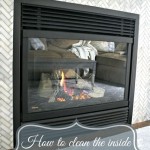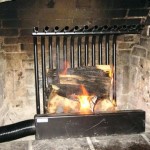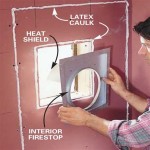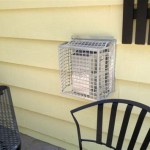Ethanol for Fireplaces: A Clean and Convenient Fuel
Ethanol, a biofuel produced from fermented plant materials, has gained popularity as a fuel for fireplaces. Its clean burning properties and convenience make it an attractive alternative to traditional wood-burning fireplaces. This article explores the advantages and disadvantages of using ethanol for fireplaces, providing insights into its suitability for various applications.
Benefits of Ethanol Fireplaces
Ethanol fireplaces offer several notable advantages, making them a preferred choice for many homeowners:
- Clean Burning: Ethanol burns cleanly, producing minimal smoke, soot, and ash. This significantly reduces the risk of air pollution and improves indoor air quality compared to wood-burning fireplaces.
- Odorless Combustion: Unlike wood, ethanol does not release unpleasant odors during burning. This ensures a more pleasant and enjoyable fireplace experience.
- Easy Installation and Maintenance: Ethanol fireplaces are typically designed for easy installation and require minimal maintenance. They are often freestanding units, requiring no chimney or flue connection.
- Convenience: Ethanol fuel comes in readily available containers, making it easy to refill. The fuel is also relatively safe to handle and store.
- Versatile Design and Aesthetics: Ethanol fireplaces come in a wide variety of designs and styles, allowing for integration into any decor. They can be used as a focal point in a room or as a decorative element.
Considerations for Ethanol Fireplaces
While ethanol offers numerous benefits, it is essential to consider certain factors before making a decision to use it for your fireplace:
- Cost: Ethanol fuel can be more expensive than traditional wood. The cost of ethanol varies depending on the fuel source and the amount used.
- Safety Precautions: It is crucial to handle ethanol fuel with care. Always follow the manufacturer's safety guidelines to prevent accidents or fires.
- Heat Output: Ethanol fireplaces generally produce less heat than wood-burning fireplaces. This may not be sufficient for heating a large room or space.
- Limited Control: Ethanol fireplaces may not offer as much control over the flame as wood-burning fireplaces. It can be difficult to adjust the heat output or extinguish the flames quickly.
Ethanol Fireplace Usage and Maintenance
To ensure safe and optimal performance of your ethanol fireplace, follow these guidelines:
- Fuel Type: Use only high-quality ethanol fuel formulated specifically for fireplaces. Never use denatured alcohol or other flammable liquids.
- Fuel Filling: Always allow the fireplace to cool completely before refueling. Never add fuel to a hot or burning fireplace.
- Ventilation: Ensure adequate ventilation in the room where the fireplace is located. This is essential for proper combustion and to prevent carbon monoxide buildup.
- Cleaning: Regularly clean the fireplace and its components, including the burner and the surrounding area. This prevents ash buildup and ensures efficient operation.
In conclusion, ethanol fireplaces offer a clean, convenient, and aesthetically pleasing alternative to traditional wood-burning fireplaces. However, it is important to carefully consider the advantages and disadvantages before making a decision. By understanding the nuances of ethanol fuel and fireplace operation, homeowners can make informed choices and enjoy the benefits of this modern technology.
:max_bytes(150000):strip_icc()/Ethanol-Fireplace-via-smallspaces.about.com-56a889795f9b58b7d0f3278c.jpg?strip=all)
Using An Ethanol Fireplace In A Small Home

Ethanol Fireplace Automatic Smart Remote Controlled Afire

Bioethanol Fires Wignells Wood Stoves Heaters Cookers

The Essential Guide To Ethanol Fireplaces Ecosmart Fire

Freestanding Bio Ethanol Fireplace Feel Stand For Indoor Use

Ethanol Fireplace Pros Bio Fireplaces

The 1 Ethanol Fireplace Bio Fireplaces

Cocoon Aeris Black Bio Ethanol Fireplace Hawkesbury Heating

Ethanol Fireplace Pros Bio Fireplaces

15 Coolest Ethanol Fireplaces For A Cozy Feel Shelterness








